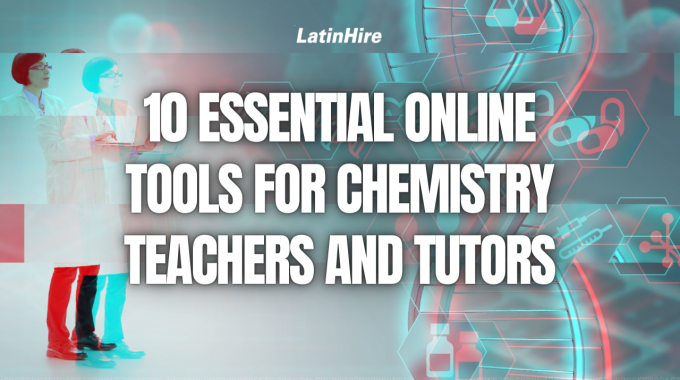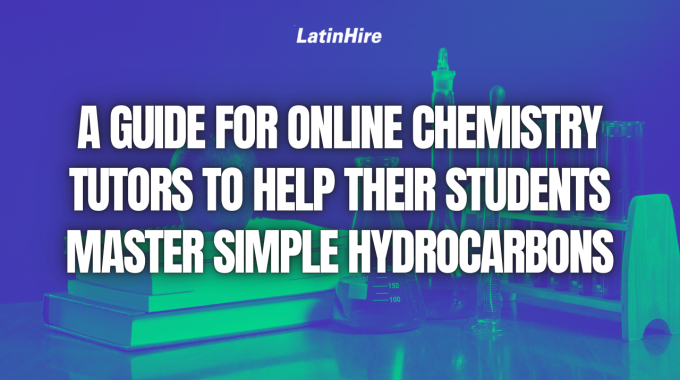Hydrocarbons form the backbone of organic chemistry, and understanding how to name and draw them…

10 Essential Online Tools for Chemistry Teachers and Tutors
In today’s digital era, the role of technology in education cannot be overstated. Online tools have revolutionized the way subjects like chemistry are taught and learned.
For chemistry teachers/tutors, leveraging these tools can enhance their teaching methodologies, engage students, and simplify complex concepts.
In this article, we will explore ten essential online tools that every chemistry teacher/tutor should consider incorporating into their virtual classrooms.
1) Online Calculators
Chemistry calculations can be intricate and time-consuming. Online calculators such as Wolfram Alpha provide quick and accurate solutions for various chemistry calculations, including stoichiometry problems, molar mass calculations, and more.
Making use of intelligent calculators can save valuable time and enable teachers/tutors to focus on explaining the underlying concepts.
2) Interactive Periodic Tables
Periodic tables are fundamental for teaching chemistry. Online interactive periodic tables, like WebElements and Ptable, offer an immersive experience for students.
These tools provide detailed information about each element, including properties, electron configurations, isotopes and trends. Teachers/tutors can use these tables to explain concepts such as atomic structure, periodic trends, and chemical bonding.
3) Molecular Model Builders

Understanding the three-dimensional structure of molecules is crucial in chemistry. Online molecular model builders like ChemTube3D and MolView allow tutors and students to construct and manipulate molecular models in a virtual environment.
These tools aid in visualizing complex molecular geometries, isomerism, and stereochemistry, making it easier for students to comprehend the spatial arrangement of atoms.
4) Virtual Labs and Simulations
Laboratory experiments play a vital role in chemistry education. However, conducting hands-on experiments can be challenging in an online setting.
Virtual lab platforms such as ChemCollective, and PhET simulations offer interactive simulations that replicate real-life experiments. Teachers/tutors can guide students through these virtual labs, reinforcing concepts like titrations, spectroscopy, and chemical reactions.
5) Online Whiteboards
Collaborative whiteboard platforms, including Limnu and Miro, enable chemistry teachers/tutors to create virtual classrooms where they can explain concepts, draw chemical structures, and solve problems in real-time.
These tools facilitate active participation and foster engagement among students, making the learning experience more interactive and dynamic.
6) Video Conferencing Tools

Communication is key in online tutoring. Video conferencing platforms such as Zoom, Google Meet, and Microsoft Teams allow chemistry teachers/tutors to conduct virtual classes with ease.
Through video conferencing, teachers/tutors can deliver lectures, share presentations, and interact with students in real-time. These tools also offer features like screen sharing, breakout rooms, and chat functions for seamless collaboration.
7) Online Chemistry Journals and Databases
Staying updated with the latest research and advancements is essential for chemistry teachers/tutors. Online chemistry journals and databases like ACS Publications, ScienceDirect, and PubMed provide access to a vast collection of scientific articles, research papers, and journals.
Teachers/Tutors can use these resources to deepen their subject knowledge, incorporate current research into their teaching, and inspire students with real-world applications of chemistry.
8) Online Quizzing and Assessment Tools
To evaluate student understanding and progress, chemistry tutors can utilize online quizzing and assessment tools such as Kahoot, Quizlet, and Socrative.
These platforms enable tutors to create interactive quizzes, flashcards, and assessments to test students’ knowledge and provide instant feedback. Gamified features can also make learning chemistry more enjoyable and foster healthy competition among students.
9) Chemistry Tutorial Videos

Online video platforms like YouTube and Khan Academy offer a plethora of chemistry tutorial videos. Teachers/Tutors can curate relevant video content or create their own instructional videos to supplement their teaching.
These videos serve as additional learning resources, covering a wide range of topics and catering to different learning styles.
10) Collaborative Document Editors
Collaborate document editors like Google Docs and Microsoft Office 365 enable real-time collaboration and document sharing between teachers/tutors and students.
Chemistry teachers/tutors can create and share lecture notes, problem sets, and study guides with their students. This fosters an interactive learning environment, encourages discussion, and provides students with easy access to course materials.
We hope this article helped you discover more online tools for chemistry teaching and tutoring! What other tools do you use in your online classrooms? Share them in the comments below.



